How to sell posters online (step-by-step)

It may come as a surprise at first, but there’s one thing you should know about posters, canvas, and other forms of wall art—it’s a profitable business idea.
There’s a simple explanation for that:
During the past few years, so many homes have been transformed into home offices, increasing the urge to make our living and working space cozier. People have never spent so much time indoors, which made home decor a hot trend that’s likely to stay for quite some time.
So, if you’re a designer, artist, or just a creative person who’s looking to start an online business and build a passive income stream, keep on reading.
In this article, I’ll show you how to start selling posters online without any upfront investment—from creating poster designs to building an online poster store.
Are posters still popular?
Yes, printed posters are still popular despite the bold presence of digital art. While other pieces of visual art like paintings may seem a bit too sophisticated, posters are simple, creative, and fully capable of conveying an important message. Plus, posters are more affordable when compared to the original artwork.
It takes a simple search on Instagram (#posters or #walldecor) or Pinterest to see that people are actively hunting for quality wall art.
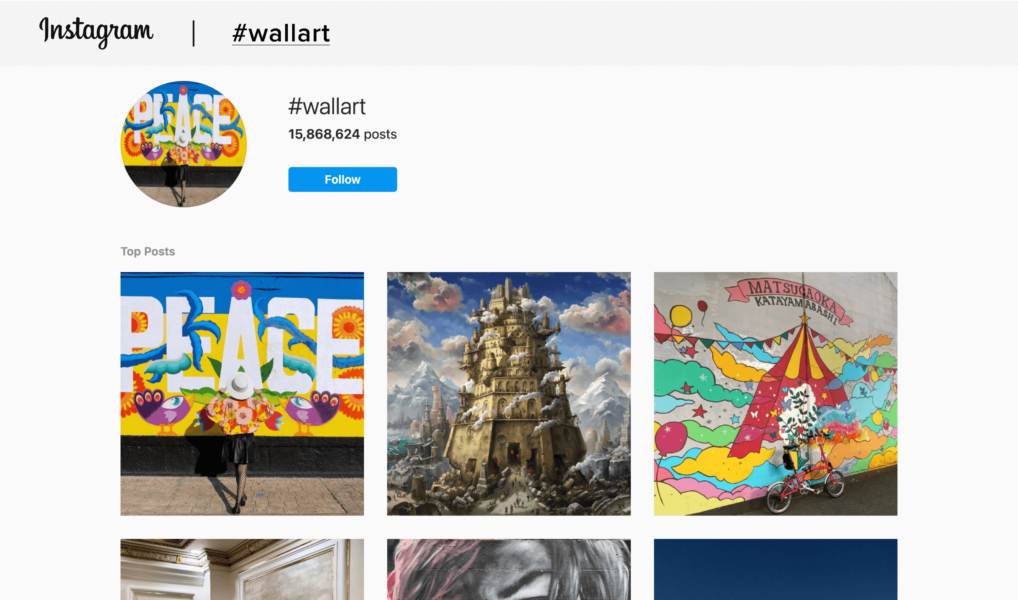
Can you make money selling posters?
The short answer is—yes, you can. Creating and selling posters with print on demand (POD) is a truly low-risk way to generate a solid passive income.
Here’s why:
- You don’t have to invest money in printing, storing, and shipping.
- You can test different designs without losing money.
- A print-on-demand online store is simple to set up and maintain.
Plus, home decor items like posters, art prints, and other wall art are on top of the best-selling print-on-demand product list. In other words, using a POD service to create and sell posters is one of the most cost-effective strategies out there.
Who should sell posters
If we’re talking about the type of creators that should try selling posters online, there are a few that immediately come to mind:
- Artists
- Designers
- Illustrators
- Photographers
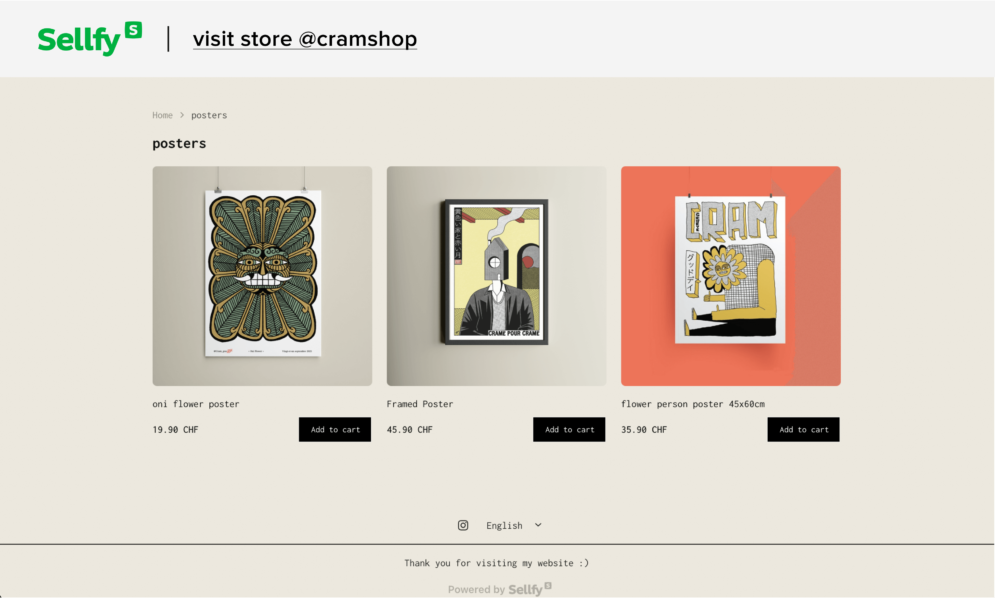
But, you don’t have to be a professional designer or a photographer to launch a poster store. So, the actual list is much longer:
- Musicians. Posters work great as band merch alongside other items (e.g., t-shirts, hoodies, guitar pics, etc.).
- Bloggers and influencers. YouTube creators, Instagram influencers, TikTokers, and other digital creators can design posters and other merch that will appeal to their audience.
- Writers. Fiction writers and comic book authors can create posters that represent the story or feature the main characters of their works.
- Coaches and teachers. Posters with flow charts, statistics, lists, or motivational quotes.
- Interior designers. Posters that can be incorporated into interior designs.
Generally speaking, any type of creator or business can design and sell custom posters. For example, you can use your logo as a poster design or even pay someone to help you create a unique print for your brand.
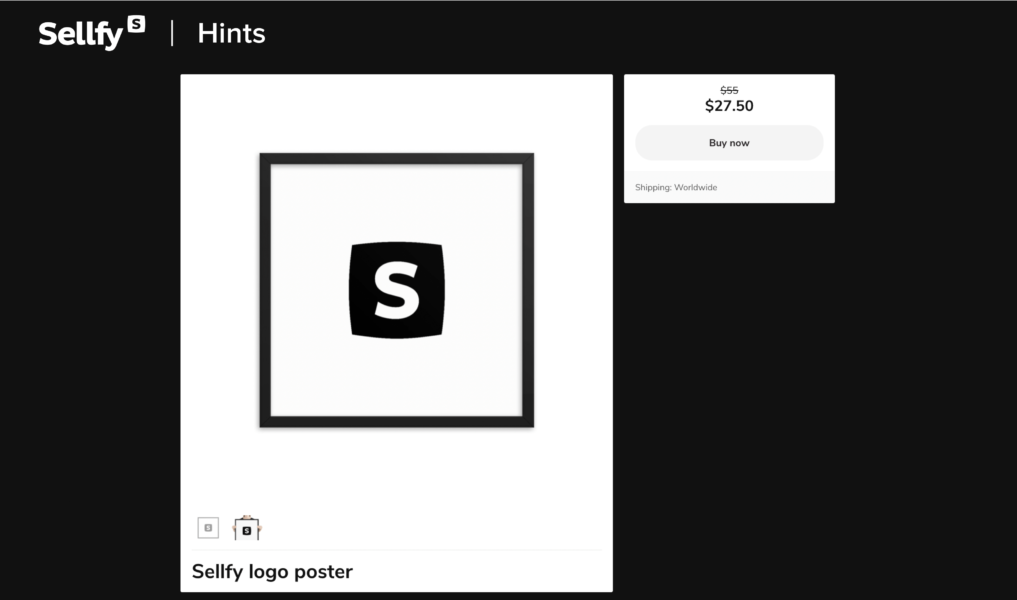
How to sell posters online
Starting an online poster business requires just a few simple steps: find a niche and create a design, choose the right print-on-demand platform, create mockups and order samples to check the quality, and finally promote your posters.
Let’s take a detailed look at each step.
Step 1. Find a niche
It may seem that creating a design would be the logical first step of poster production. While it’s not completely wrong, the truth is that your poster design will be heavily influenced by your audience and the niche that you choose.
Doing quick market research will benefit you in the long run and can help you bring your poster business to the next level. Just follow these steps:
- Identify the interests of your audience. It’s a bit easier for artists, as you can simply print your most popular works on canvases or posters. But, if you are a digital creator or a designer, you could ask your audience directly what they expect from you (e.g. create a poll on social media).
- Check out Google trends and platforms like Quora to see how big the potential interest is for the products you want to sell. Start with browsing the top products in your category. If you can’t find any offers, that’s not a good sign.
- Test out different designs until you find the ones that work best. If you choose a print-on-demand business model, you can test different design ideas without losing money before you find the one that brings you sales.
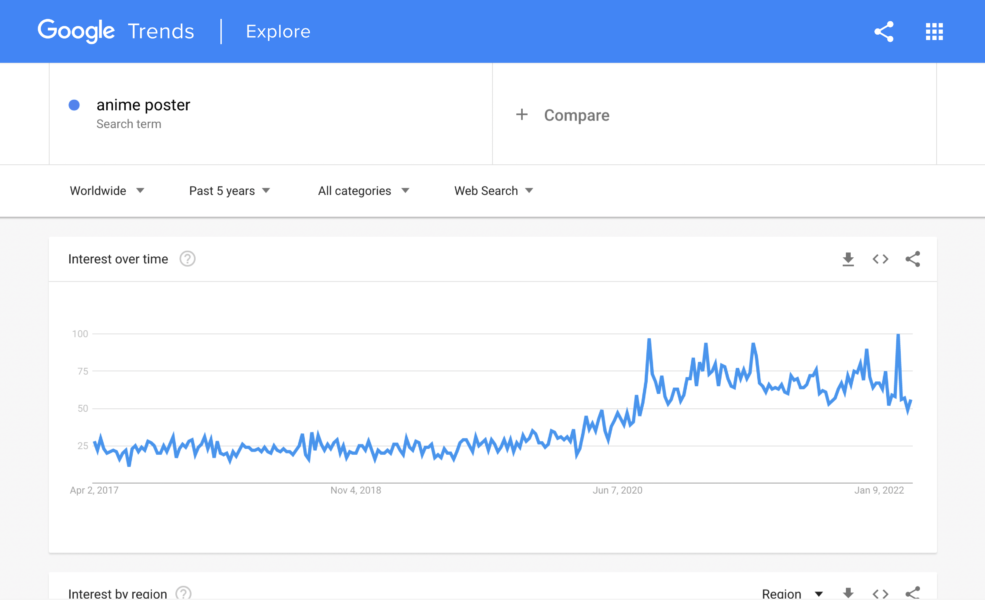
Step 2. Open a print-on-demand store with Sellfy
When it comes to choosing the right print-on-demand service for creating and selling your posters, Sellfy is the one that stands out among others.
Why is that?
With Sellfy, you can sell print-on-demand posters and other merch through a fully customizable online store or from an existing website. The best part? It will take you less than 10 minutes to start selling. Plus, you can sell other physical products alongside your print-on-demand products as well.
Here’s how to start selling posters with Sellfy:
- Subscribe for Sellfy’s free 14-day trial—all you need is a valid email address. This way you can test-drive Sellfy before you commit to one of three of paid plans.
- Choose one of the premade store themes, or use Sellfy’s store customizer to create a design from scratch.
- Go to the PRODUCTS section of your Sellfy account, choose Print on demand > Add new products. From there go to the Home & Living category, pick the poster type you want to sell, and upload your design.
- Finally, set a retail price for your posters, add the description, hit Save product, and the posters will be listed in your store.
Step 3. Create poster mockups and order samples
Once you launch your Sellfy store, you can easily order samples by purchasing one of your own posters. This way, you can follow the entire checkout process from your customer’s perspective as well as check the print and product quality. Plus, you can showcase the real product on Instagram, TikTok, YouTube, and other platforms for marketing purposes.
However, if you don’t want to spend money on ordering samples, you can use Sellfy’s existing products photos or a service like Placeit to create product mockups.
Apart from that, you can find tons of useful resources online. For example, take a look at Clint English, a Sellfy store that sells awesome merch mockups and high-quality graphic design resources.

Step 4. Promote your posters
Posters represent visual art, therefore social media will be your go-to marketing channel.
Most people are looking for interior design inspiration on platforms like Instagram, Pinterest, TikTok, and YouTube—that’s where you should feature your products. To learn more about promoting your posters on social media check out these guides on selling your art on Instagram and selling print-on-demand products on TikTok.
The good news is that if you choose to sell posters online with Sellfy, you also gain access to a set of built-in marketing tools:
- Discounts & coupon code
- Upselling feature
- Email marketing
- Cart abandonment
- Pay-what-you-want pricing
- Advanced SEO settings
How much should you sell posters for?
Pricing posters and art prints can be tricky, as once you create an original design you can sell as many prints as you like with minimum effort.
There are two factors that you need to keep in mind when choosing the price:
- The cost of production
- The market
When it comes to production cost, it mostly depends on how you decide to produce your posters—print them yourself or use a print-on-demand service. For example, if you choose to sell your posters with Sellfy’s print on demand, the production cost is already included in the final price of the product. It means that you’ll only be charged for the product and fulfillment after your customer orders something from your store. It allows you to set your own retail prices as high or as low as you want.
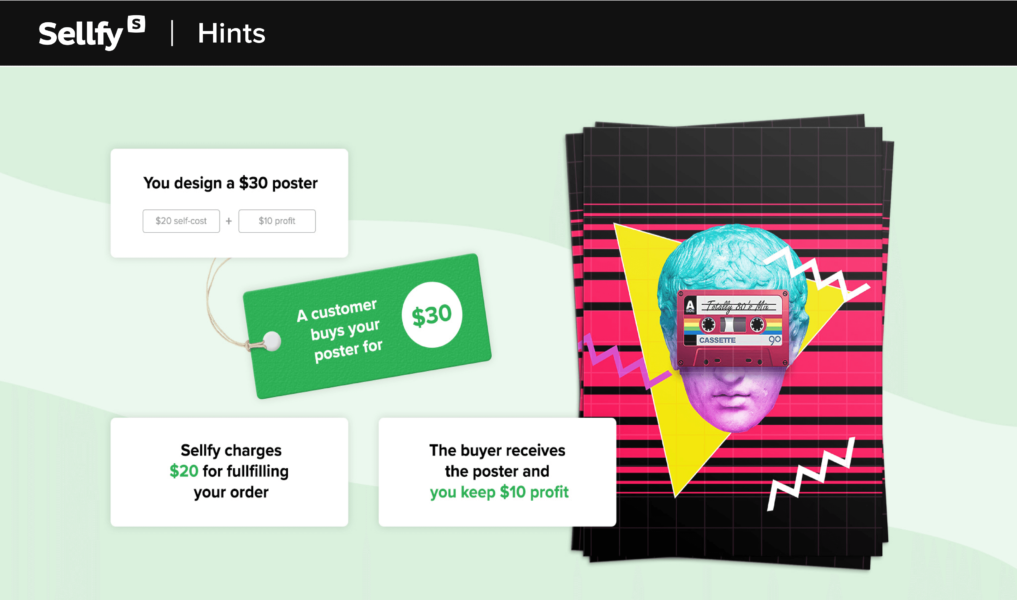
It can be helpful to do quick market research to see how your competitors are pricing similar types of prints. For example, if you want to start selling pencil drawing prints, check out how other artists are pricing similar works. The same applies to materials, print quality, sizes, etc.
And last but not least, instead of undercharging your work, start getting paid what you’re worth. Always remember to count in the initial development time for anything that requires certain skills and time to be created.
What kind of posters sell best?
As I’ve mentioned before, the reason behind the popularity of posters is the huge increase in demand for home decor and interior design trends.
But, then comes a question:
What makes a good poster?
To answer this, I took a look at current trends and summed up the most popular wall print types for 2025.
Original artwork
If you’re an artist, designer, or photographer who’s constantly working on creating original art and designs, then this is a no-brainer. Taking into consideration the current trend for wall decor featuring original artwork, you could try selling prints of your original works.
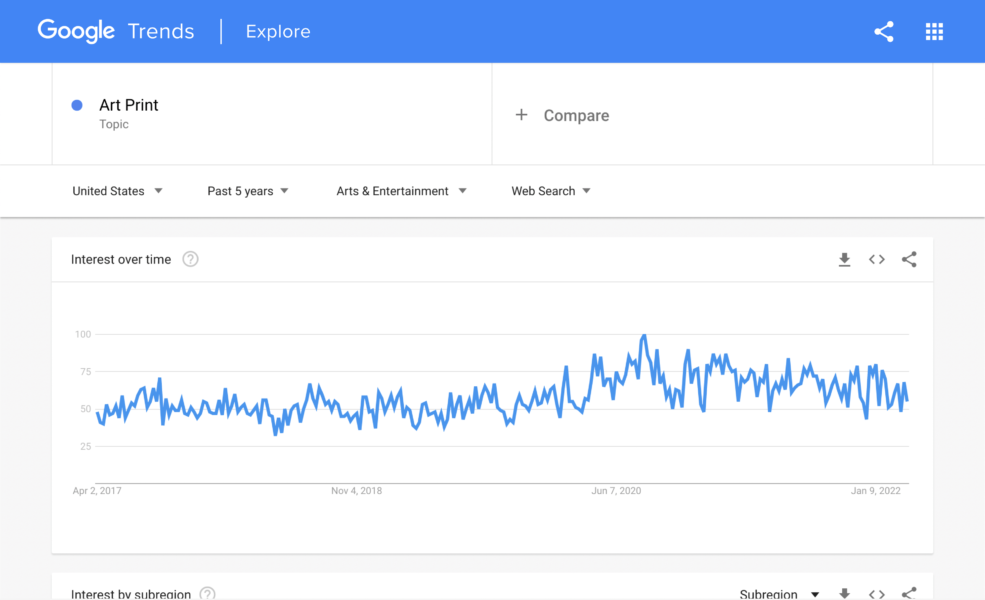
With a print-on-demand platform like Sellfy, you can easily create and sell posters and canvases with your paintings or photographs. Colleen Reynolds is a watercolor artist and a small gallery owner, she also teaches watercolor techniques on her YouTube channel. Apart from selling her paintings both offline and online, she sells posters and canvas prints with her works on her Sellfy store.
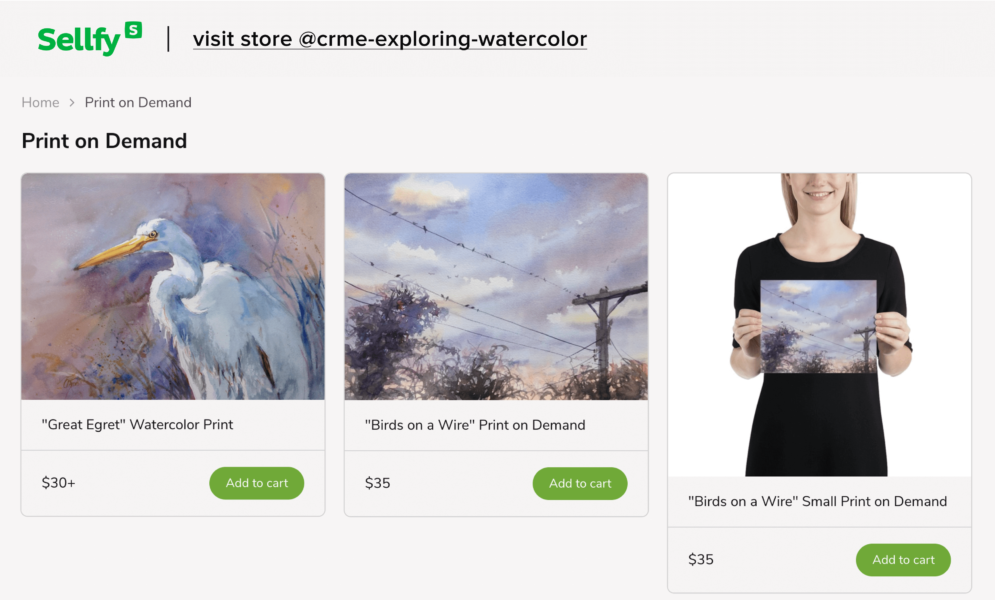
Affirmations, statements, and typography posters
Posters that feature all sorts of motivational phrases, famous quotes, or typography designs have been around for a long time. Such posters are often used as inspirational pieces of art in offices or living spaces.
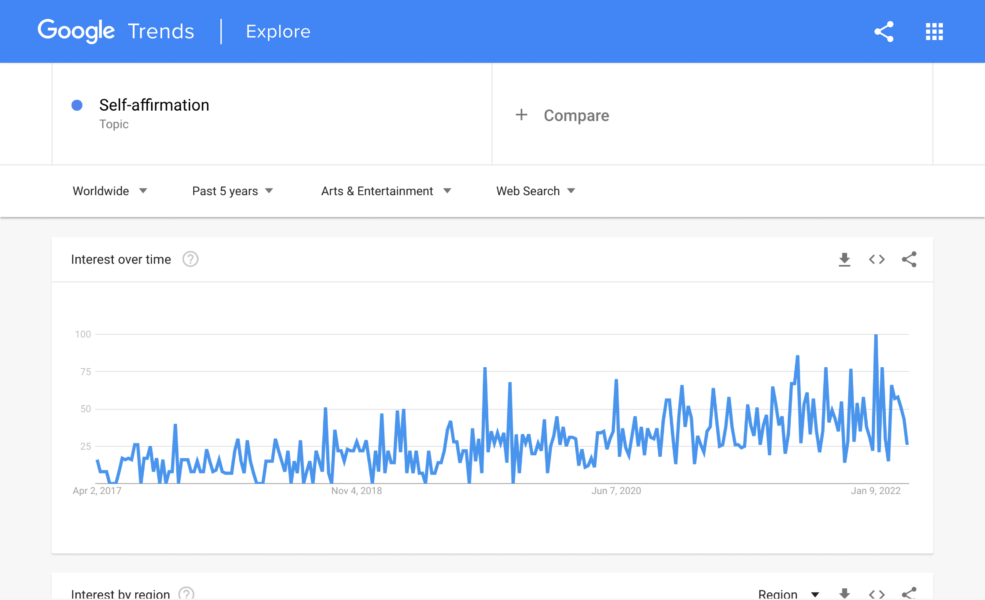
The great news is that most digital creators can adjust this niche for their audience. There are so many options:
- Print your catchphrases, if you’re a YouTuber or social media influencer.
- Put down song lyrics or album artwork, if you’re a musician.
- Use quotes from your works, if you’re a fiction or comic book author.
- Create cool typography designs, if you’re a designer or an artist.
With this poster style, the sky is the limit. For example, look at one of Sellfy’s creators Caroline Emeka who designs and sells faith-inspired wall art.
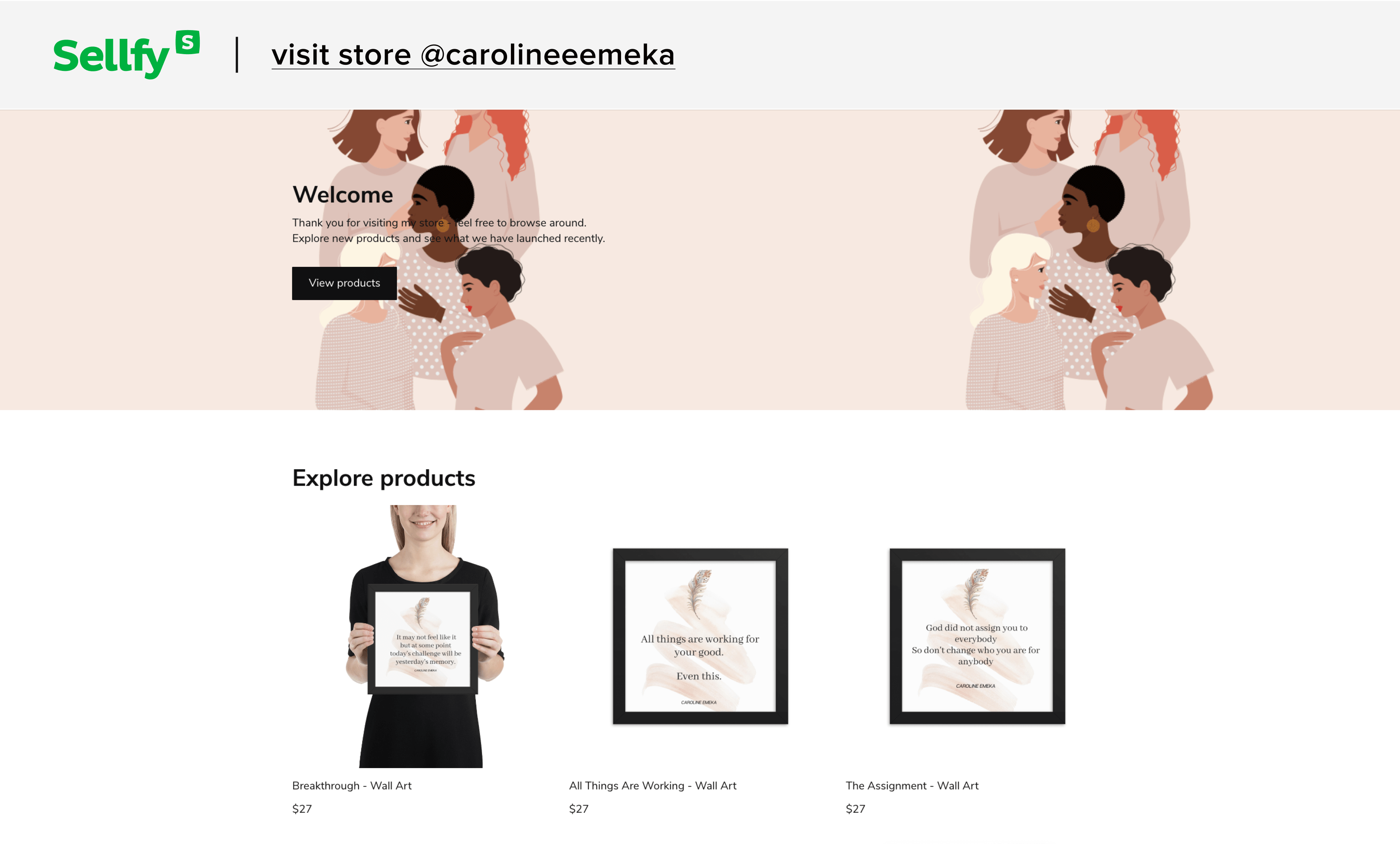
Minimalist posters
There’s an old saying that stands true to this day—less is more. In the era of information overload, people are craving simplicity and minimalist aesthetics. For that reason, they’re still insanely popular. Plus, they just look damn nice.
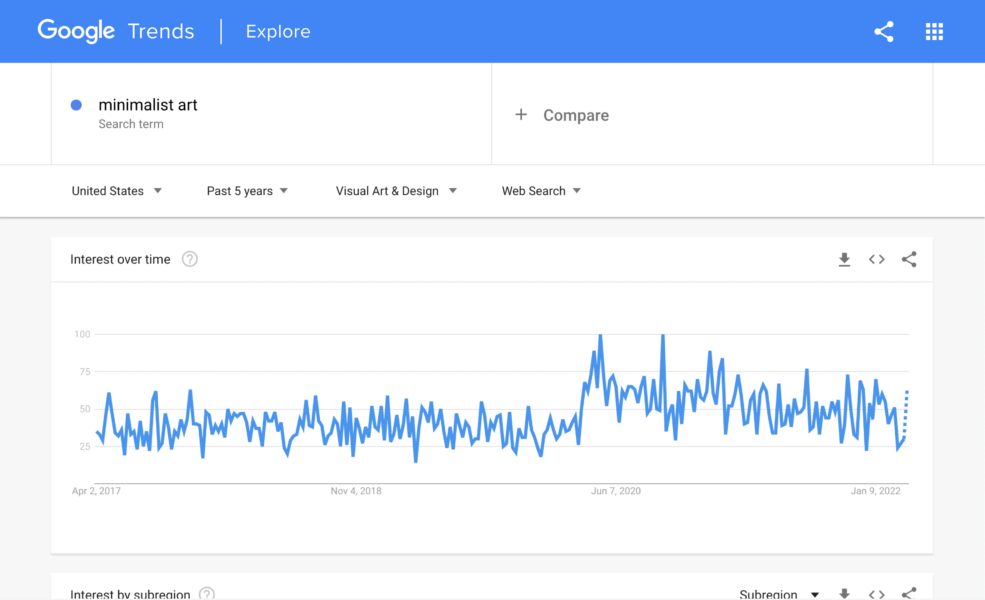
There are practically no set rules to creating minimalist designs—it’s all about conveying a message in the simplest, mildest, and cleverest way possible. If you’re a creative person, there might already be at least one work showcasing minimalist design in your portfolio that you can use.
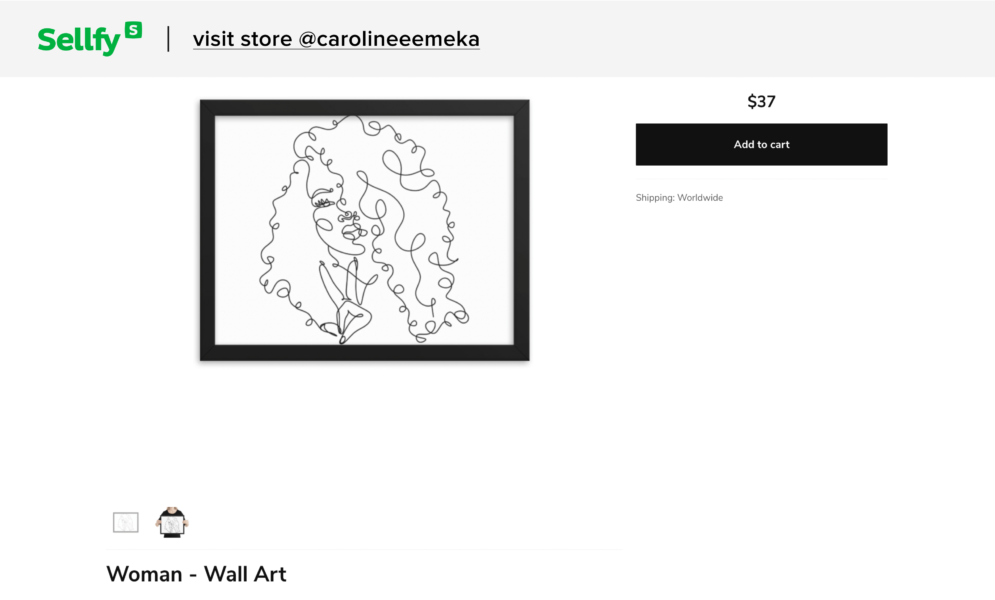
Vintage posters
Don’t get me wrong. I’m not talking about actually selling a century-old poster, rather than creating a timeless ‘vintage’ design. ‘Vintage’ combines a whole range of design methods, which span decades and design styles. Such posters are supposed to create a sense of nostalgia, and this is something that people continue looking for.
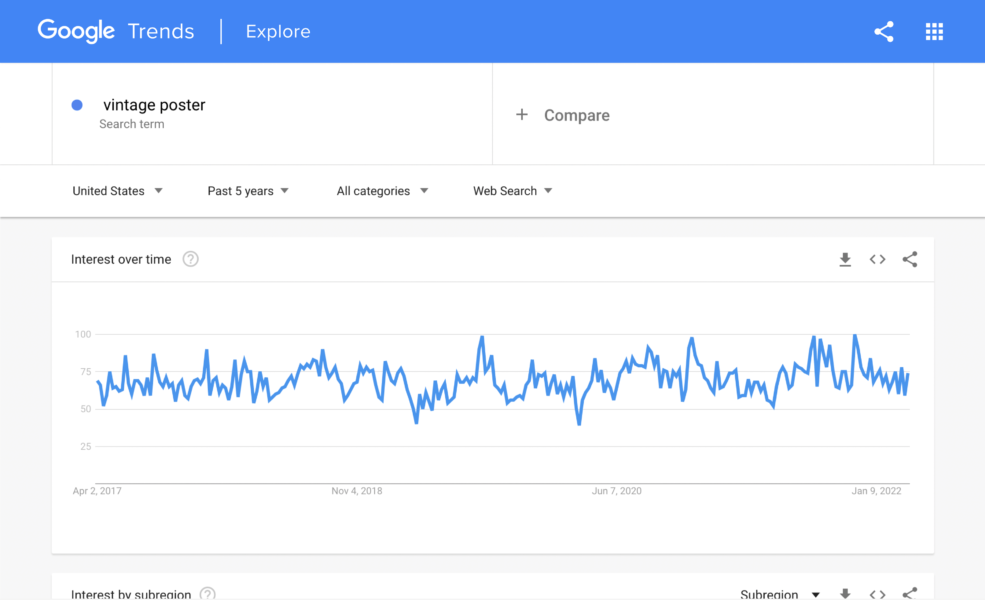
To create an awesome vintage poster design you have to combine retro graphic design style with retro design elements such as fonts and illustrations. You shouldn’t try recreating dated graphics, but rather pay tribute to centuries of design heritage.
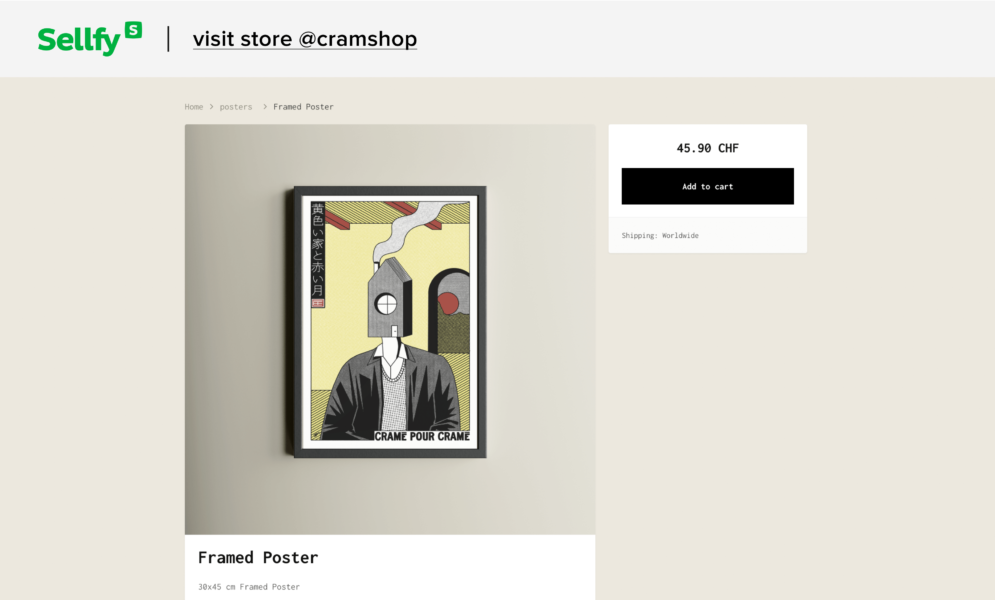
Poster design trends
If you’re planning to start creating and selling posters online, being one step ahead of the current graphic design trends is essential.
But, there are so many things to consider:
What are the design trends for 2025? What colors should you choose? How do you create a winning poster design?
Without further ado, here’s a short summary of the hottest poster design trends for 2025.
90s nostalgia
Contemporary pop culture has been obsessing over 80s nostalgia over the past few years—this also heavily influenced the world of graphic design. Now, it looks like the 90s are coming back in a variety of incarnations.
Designs inspired by the 90s are focused on positivity, so they are usually noisy, loud, bright, and filled with different geometric shapes. To create a sense of nostalgia with a touch of old-school cool, try playing with Memphis design patterns, basic emojis, and eye-catching typography.
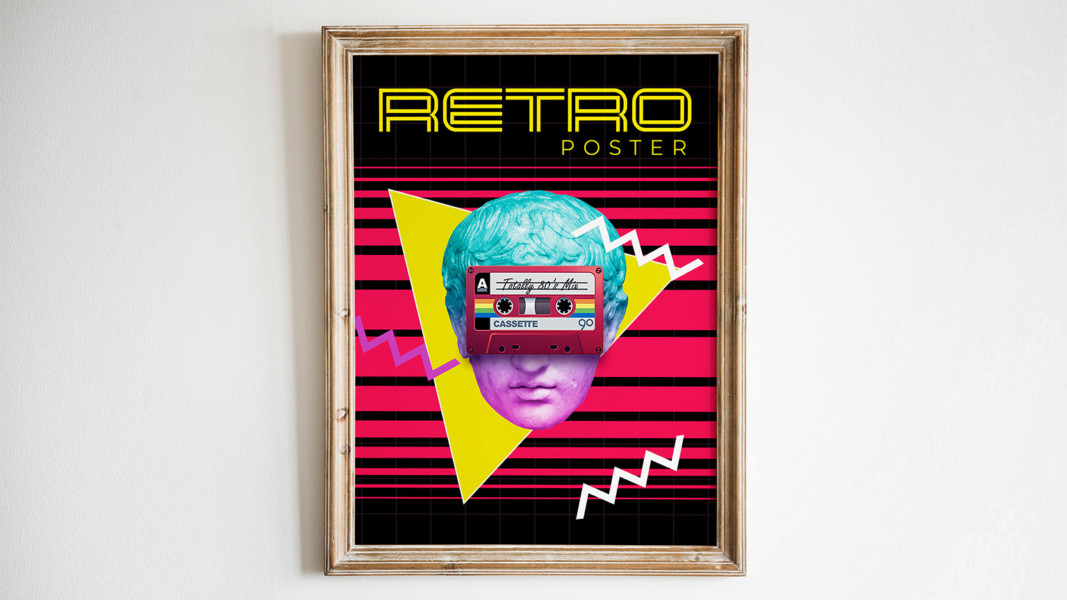
Escapism
There’s no surprise that with all that’s been happening in the world over the past few years, artists and designers are doing their best to escape reality by creating new fantastic worlds. Thus, they’re emphasizing escapism in its purest form.
Escapism is one of the main illustration trends of 2025. It’s a great opportunity to play with unexpected color combinations, unusual character designs, and fantasy settings. The main indicator of an escapist design style is unusual imagery filled with lots of intriguing details. Your job is to make people explore and lose themselves in your illustration.
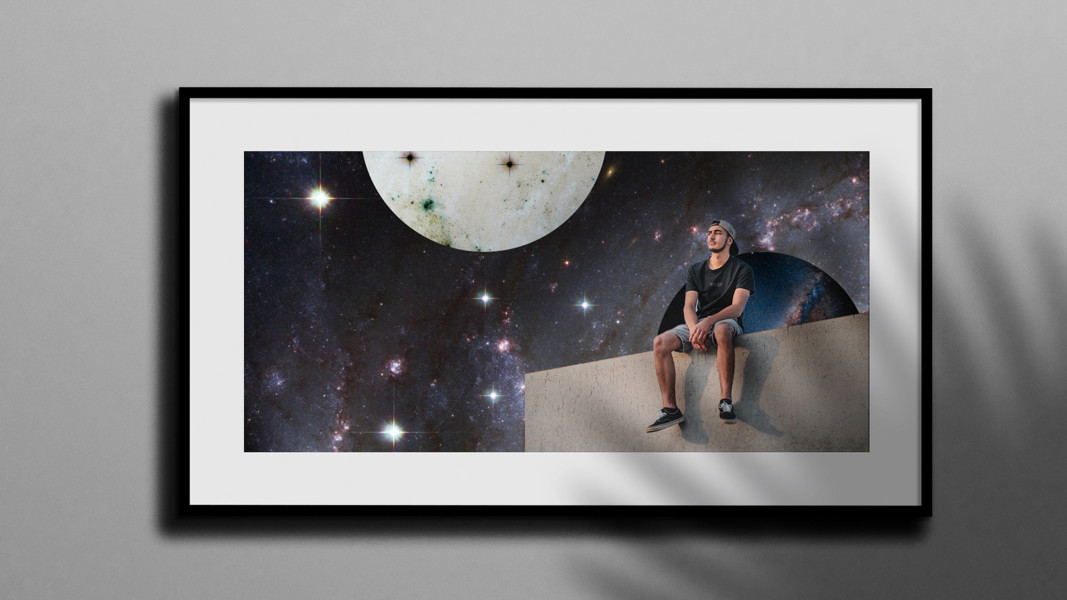
Complex maximalism
This one is simple—even though most people still love minimalism, it doesn’t work for everyone. Plus, maximalism gives creators a chance to go crazy with their imagination.
This design style is all about filling the space with color, shapes, patterns, and other objects. Essentially, it’s a combination of various elements and styles that sometimes don’t even belong together, but, at the same time, tell you a story. The main elements of maximalism include conflicting themes and patterns, contrasting colors, repeating elements, multiple fonts, and a lack of negative space.
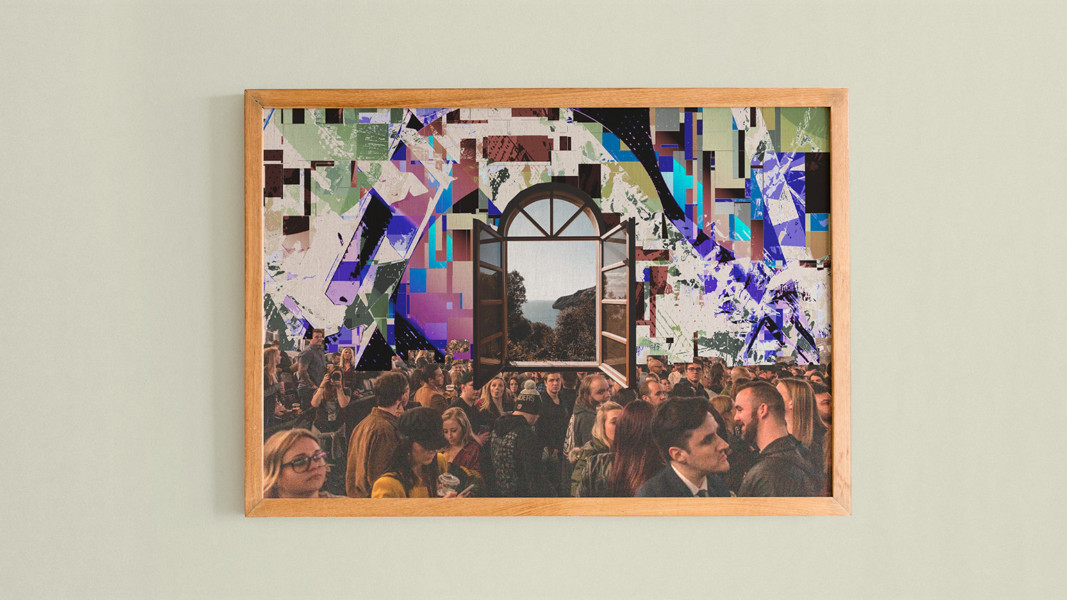
Expressive typography
Neglecting all of the general typography rules and creating literal chaos on your poster—what could be more appropriate for 2025? I’m talking about pushing the bounds of legibility to its limits, expressing the message visually rather than textually.
Because the trend is rooted in experimentation, there are no strict rules to follow here. Just try playing with the text and letter alignment, shapeless blobs, mind-bending images, mixed word order, and come up with your own unique look. Essentially, all you have to do is erase the line between text readability and abstract letter design.
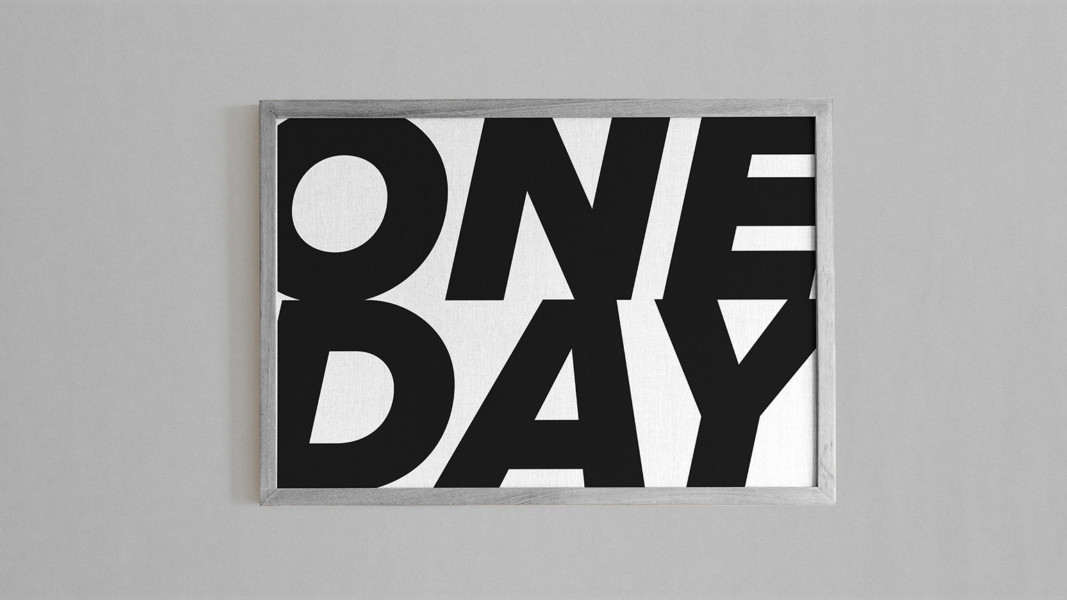
Patterns
Using a pattern can effectively bring both life and depth to your poster design. So, here’s a shortlist of patterns that will be huge in 2025:
- Nature-inspired and bold floral patterns
- Animal prints
- Large-scale patterns
- Optical illusion
- Tye dye patterns
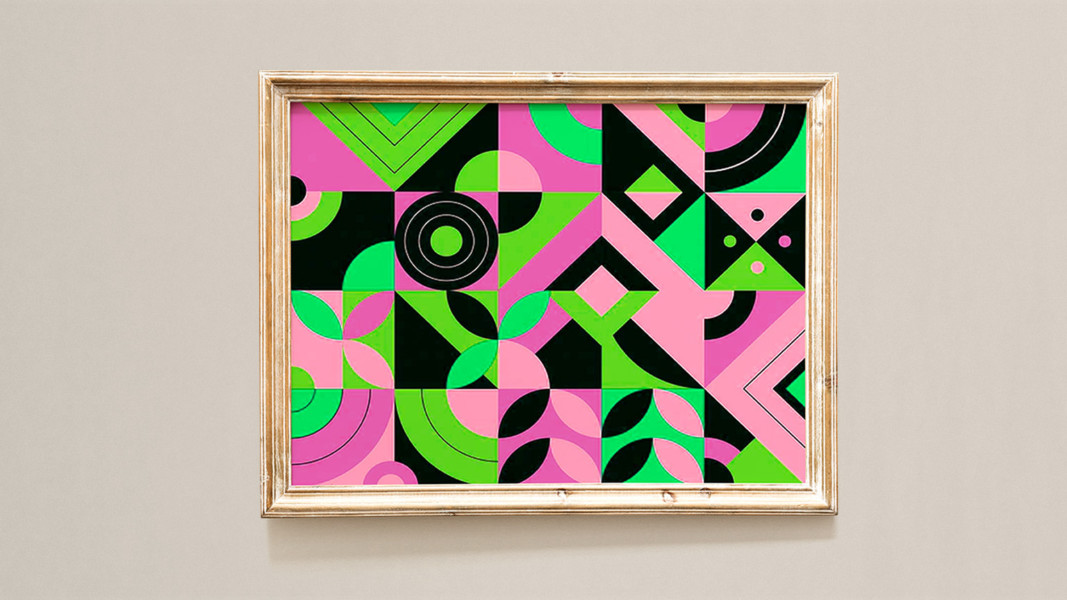
Are you ready to sell posters online?
As you must’ve learned by reading this article, it doesn’t take a lot of effort or money to start selling posters. All you have to do is choose a print-on-demand business model, and then it’s a matter of a few simple steps:
- Sign up for Sellfy
- Create your poster designs
- Start selling online!
But, if you’re still not sure or need more details on how to start and run a print-on-demand online store, feel free to check out this guide: Build your Sellfy merch store in under 10 minutes.
FAQ: selling posters online
What is the best website to sell posters?
Sellfy is a great website for selling posters and other digital products. With Sellfy, you can create your own online store in just a few clicks. The platform offers secure payment options, customizable storefronts, and easy-to-use tools for marketing and promoting your products.
Sellfy also provides detailed analytics and customer management features to help you grow your business and reach a wider audience.
Can you make good money selling posters?
Successful poster sellers can earn anywhere from a few hundred dollars to thousands in sales. With the rise of online marketplaces and print-on-demand services, it’s easier than ever to start a poster business without the need for a physical store. The key is to create unique designs that appeal to a specific target market.
Successful poster sellers can earn anywhere from a few hundred dollars to thousands in sales.
How much should I charge for my posters?
The cost of your posters will depend on various factors such as the material used, size, design complexity, and quantity. Before setting a price, consider the time and resources invested in creating your posters as well as your desired profit margin.
Research the market and compare prices to ensure your rates are competitive. Remember to factor in shipping costs if applicable. Ultimately, the price should reflect the value of your product and the effort involved in creating it.






